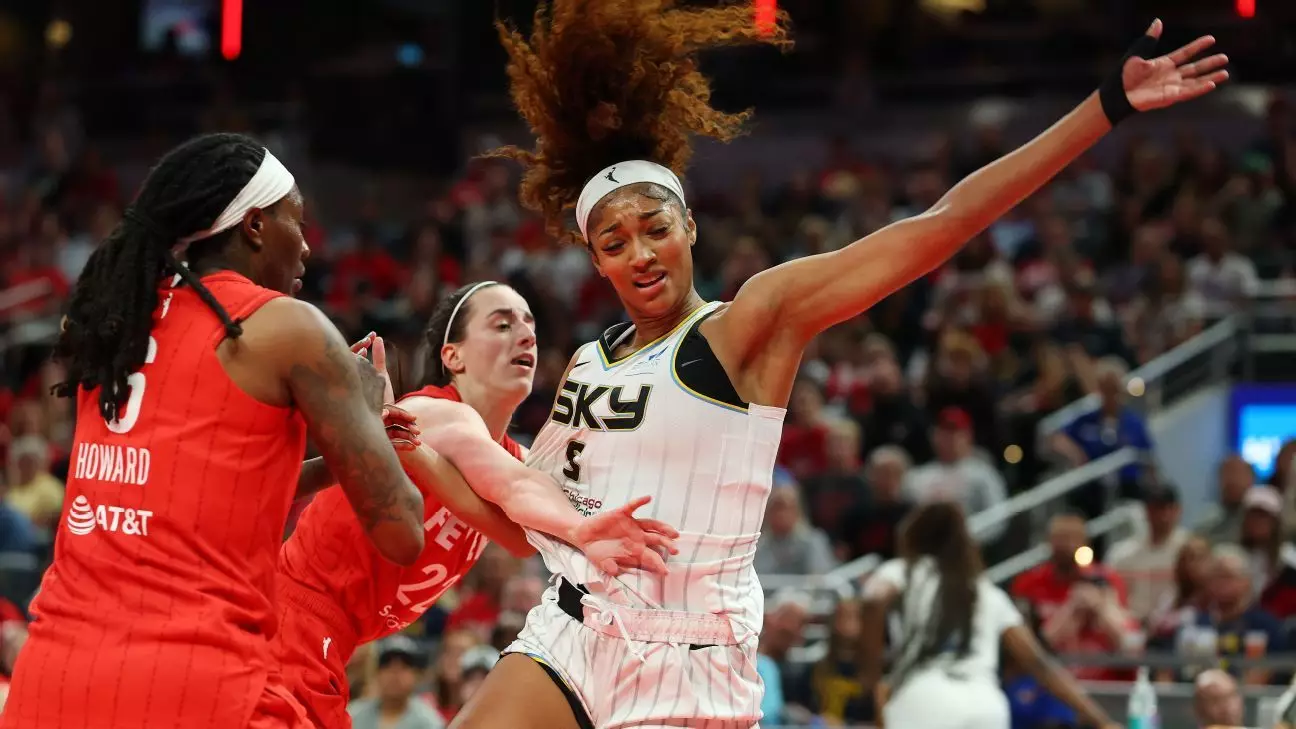In recent days, the sports world has been rocked by an alarming incident in the Women’s National Basketball Association (WNBA). During a match between the Chicago Sky and the Indiana Fever, a series of “hateful fan comments” were directed at star player Angel Reese—a development that highlights an unsettling reality within sporting arenas. This situation is not merely an isolated case of poor behavior; it’s emblematic of deeper societal issues, including racism and discrimination that many would prefer to gloss over or ignore.
As the WNBA has rightly pointed out, such vitriolic actions have no place in sports or society at large. The unwavering support for Reese from the players’ association speaks volumes about the unity among athletes when facing issues of respect and dignity. The league’s statement condemning racism and hate is a commendable first step, but it begs the question: what more will be done to eradicate this behavior now and in the future?
A Closer Look at the Game
Analyzing the game itself, it’s particularly troubling how the fanbase reacted to a standard basketball play that involves physicality and competition. The incident, in which Caitlin Clark committed a foul on Reese, escalated tensions on a court that should ideally foster camaraderie and sportsmanship. It’s a sudden reminder that while players are engaged in fierce competition, the audience also plays a crucial role in shaping the atmosphere—what should have been a thrilling display of skill transformed into a spectacle of shame.
With Reese as a focal point, the atmosphere at Gainbridge Fieldhouse descended into one marked by hostility as she stepped up for foul shots amid a chorus of boos. At a time when women’s sports are seeking to elevate their status to that of their male counterparts, such disrespectful behavior not only undermines these efforts but also passionately tempts the tide back towards antiquated notions of exclusion and hatred.
The Players’ Response
It’s refreshing to witness Reese and Clark, two athletes at the center of the fray, downplay the incident involving them on the court. Their resolve to separate the sport from personal animosity is commendable. However, it remains crucial to scrutinize these incidents beyond the players’ immediate sentiments. While they may brush it off as “just basketball,” the sanctity of the game requires collective responsibility from fans, organizations, and governing bodies to ensure a safe and welcoming environment for all participants.
It’s encouraging that the players’ association is advocating for an inquiry into fan behavior. Their participation in this dialogue is vital as it reflects a shared commitment to ensuring that athletes represent their values on and off the court. The WNBA’s “No Space for Hate” platform is a promising initiative, but it raises additional questions about the effectiveness of such policies: will they be truly enforced, or will they function as little more than slogans?
The Role of the League
For the league itself, this moment presents an opportunity for action. WNBA Commissioner Cathy Engelbert has stated that basketball should be a uniting force, transcending cultural and societal barriers. However, without a robust mechanism for accountability—such as a zero-tolerance stance toward abusive behavior or fan ejections based on clear misconduct—the league risks betraying its integrative mission.
Cooperation with teams like the Fever and prompting investigations are essential, but it should also enact meaningful penalties against unruly fans. Failure to do so risks breeding an environment where hate can fester unchecked.
When we dissect this unfortunate episode, it underscores much more than a moment in a game; it reveals an urgent societal malady that permeates beyond sports. The messages sent by fan behavior will shape the landscape of women’s athletics for generations. While policies introduced by the league and the players’ associations hold the potential for change, it’s the implementation of these ideals that will forge a path forward. Audiences are not merely spectators; they are participants in the sporting experience, and as such, their responsibility lies equally in protecting the sanctity of the game—and its players—from hateful ideologies that threaten to divide rather than unite.


Leave a Reply